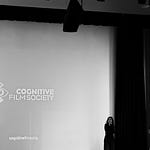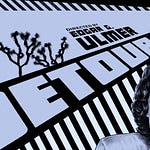Watch our conversation above—recorded before the Cognitive Film Society's inaugural screening of Rear Window at the Hewlett-Woodmere Public Library. Yes, it's handheld and a bit shaky (my daughter filmed from the audience), but there's something appropriately voyeuristic about watching through an unsteady lens.
Foster Hirsch has spent fifty years teaching film history, but he still gets fired up defending the 1950s. "In my opinion, it's the greatest era of American movies," he declared, leaning forward in the Gold Theater. "Not everybody shares that, but I feel so. That's why I wrote this book."
In a filled theater on Long Island, with ages ranging from teenagers to nonagenarians, we were about to discover why a 71-year-old film about a man stuck in his apartment still matters—maybe more than ever.
The Ultimate Body Snatcher
The 1950s forced Hollywood to reinvent itself against what Hirsch calls "the ultimate body snatcher—television." The industry's response? VistaVision, CinemaScope, 3D—experiences that couldn't be replicated on small screens.
Rear Window itself showcases VistaVision's "great depth and clarity," perfect for a film about the act of looking. As Hirsch notes: "We're all voyeurs. We're all interested in looking." Stewart's immobilized photographer makes us complicit in his surveillance, transforming universal human curiosity into suspenseful art.
Grace Kelly: Action Hero in Haute Couture
When I brought up Grace Kelly, Foster delivered the evening's best insight. While she embodied 1950s femininity, he quickly pivoted: "She's really the action star of the film."
This sparked a fascinating discussion—with Stewart's leg in a cast (Foster confirmed Hitchcock wanted us to read into that), Kelly's Lisa Fremont becomes the active force. She scales fire escapes and breaks into apartments while Jeff watches helplessly. Yet Foster wondered aloud whether this mismatched couple could actually work. His uncertainty lingered in the theater.
We Want the Murder
Most disturbingly, Hitchcock makes us complicit in darkness. "If there isn't a murder, it isn't as interesting," Hirsch observes. "We want to be thrilled. If there's no murder, we feel let down."
Each apartment window reflects Jeff's psychology—"something wrong in each of them," mirroring what's wrong in the protagonist's life. Hirsch, a Village resident himself, admits: "My back courtyard is not totally different from the courtyard in this film. I'm living rear window all the time."
Why This Matters Now
Thinking about our current streaming age, Foster's insights hit home. The 1950s didn't retreat from television's threat—they revolutionized cinema. The parallel to our moment was impossible to miss.
When our Q&A ended only because the library needed to close—with hands still raised and questions unasked—I knew we'd tapped into something real. Great films demand great conversations, and both need the shared darkness of a theater.
"You think it's going to be a film of great confinement," Hirsch said about Rear Window's single apartment setting. "Not at all. You feel very open and liberated."
Same for our evening at the Gold Theater—one film, one expert, infinite windows onto human nature.
Our inaugural screening packed the Gold Theater with 60+ film lovers of all ages. The conversation ran until closing time—a perfect beginning for the Cognitive Film Society.







